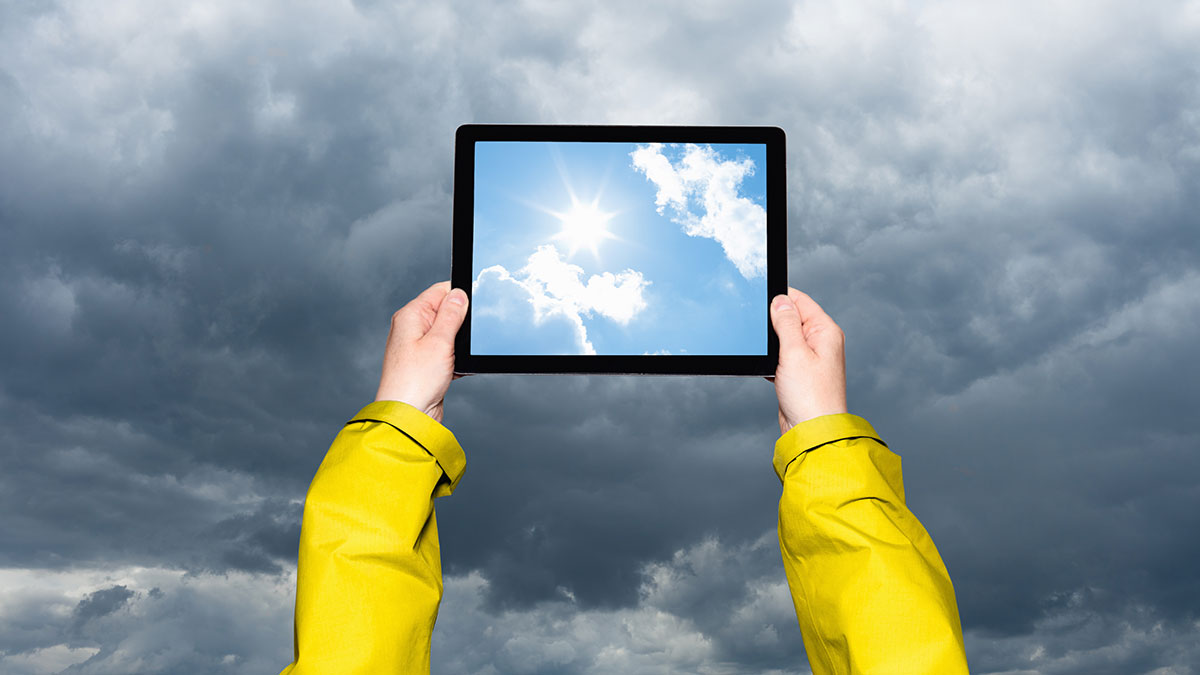By staying informed, having a bushfire survival plan, packing an emergency kit, and taking necessary precautions, you can help reduce the risk associated with bushfires.
How do we actually predict the weather?

Finally out of lockdown, we once again have reason to check the weather forecast.
Exacerbated by the unpredictable weather season, the daily check of the weather will return as a ritual in every Australian household.
That said, knowing the weather isn’t just for families planning picnics. Weather prediction has been an integral part of farming, transport, and logistics for thousands of years. By the majority, knowing what the skies will bring is largely considered an act of wizardry summoned by meteorologists on the six o'clock news.
So how do the weather presenters actually know what’s coming?
How is the weather predicted?
Thousands of years ago, predicting the weather began as a game of observation – watching cloud patterns, watching when the sun rose and fell, or when the flowers began to bloom. Nowadays, weather forecasting relies on technology, science and data to predict the state of the atmosphere, and how it will change.
Before a prediction can be made, expert meteorologists must first make an ‘observation’. By taking readings from weather stations, satellites and even data captured by airplanes to reveal the current state of the atmosphere.
Meteorologists then apply their understanding of atmospheric processes to determine how the atmosphere will evolve – and therefore changing the weather.
According to the Bureau of Meteorology (BoM), predicting the weather is a bit like being a storyteller. Meteorologists take weather information – some of it highly technical – from many different sources and turn it into a digestible story that people can use to make decisions about their lives.
Using a global numerical prediction model, known as the Australian Climate Community Earth Systems Simulator (ACCESS), the BoM receives updated forecast data from ACCESS, which they compare with several other weather models to bring us the weather forecast each day.
We have all cursed the weather reporter on the six o’clock news who promised us blue skies, only to plan a picnic and be drowned out. While millions of dollars of equipment and the brightest minds all contributing to how weather is predicted, our incomplete understanding of the processes and the seemingly random nature of our atmosphere makes it an inexact science.

Checking the weather helps us know if the clouds may turn to sunshine. Image: Getty.
Prepare for the unexpected
While meteorologists can anticipate extreme weather events, it is impossible to know exactly when or where extreme events such as hurricanes, tornados, floods or bushfires will occur. It is believed that due to changes in our climate, severe weather events will become an increasingly normal part of our lives.
Ongoing changes to the climate also make it increasingly difficult for meteorologists to predict certain aspects of weather, according to one study from Stockholm University.
Many climate experts believe that as the climate shifts, it will result in more frequent and more intense weather events including heatwaves, heavy rainfall, bushfires and cyclones. While the events themselves may become more severe, the financial cost will grow as well.
Consider the recent flooding catastrophe in Victoria in June of 2021, for example. Figures from the Insurance Council of Australia (ICA) revealed that this single event on 13 June resulted in 27,000 claims worth $230 million.
It’s hardly going to be the last weather event of its kind. The Climate Council of Australia warns that extreme weather events are becoming commonplace in Victoria, and across the nation.
Keeping an eye on the forecast
As we head into the summer months, the risk of bushfires and some extreme weather events increases. Make sure you and your family are prepared for a worst-case scenario, especially if you live in (or are visiting) regional areas that are prone to natural disasters.
RACV has launched a severe weather webpage, which brings together a wealth of resources and information from organisations including the Red Cross, Victorian Country Fire Authority and the Bureau of Meteorology to help Victorians prepare for and protect themselves from the impact of severe weather.
While you may not be able to prevent these events, you can lessen the impact these unavoidable weather events can have on your life. Despite so many insurance products being available, according to the Insurance Council of Australia, underinsurance is a prevalent issue in Australia.
Underinsurance can occur with any type of insurance, but there is more evidence of it in the home and contents insurance as well as the life insurance sectors. Australian insurers write 43 million business and household policies each year, and pay out more than $166 million in claims every working day, according to ICA figures.
Make sure your insurance is up to date before the extreme weather of summer is upon us.
The information provided is general advice only. Before making any decisions please consider your own circumstances and the Product Disclosure Statement and Target Market Determinations. For copies, visit racv.com.au. As distributor, RACV Insurance Services Pty Ltd AFS Licence No. 230039 receives commission for each policy sold or renewed. Product(s) issued by Insurance Manufacturers of Australia ABN 93 004 208 084 AFS Licence No. 227678.


